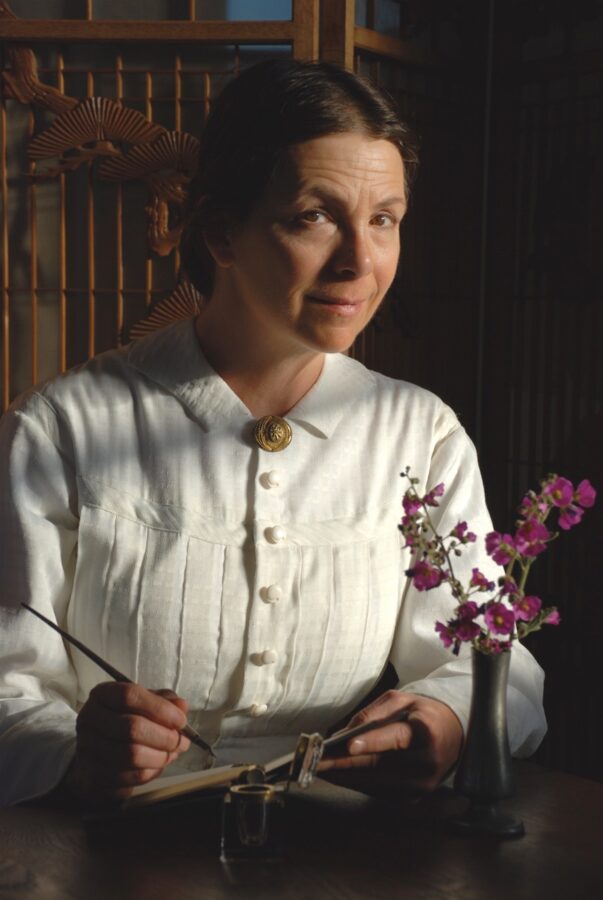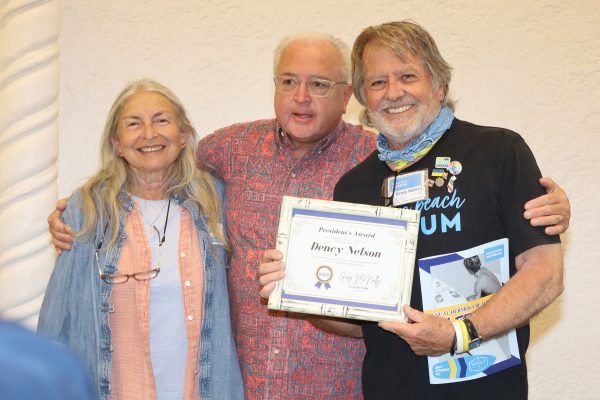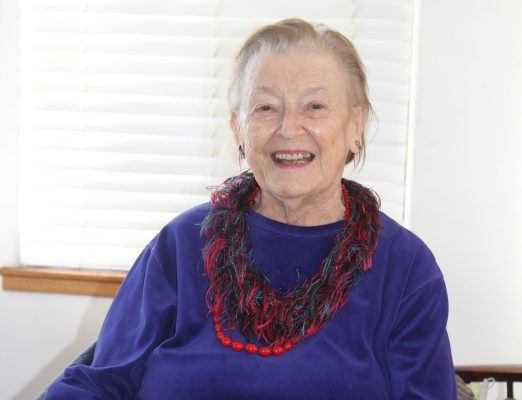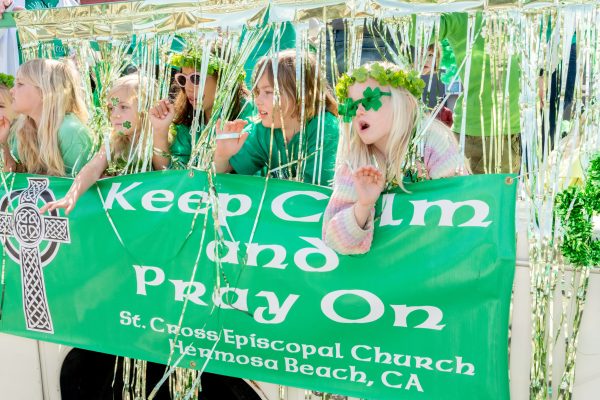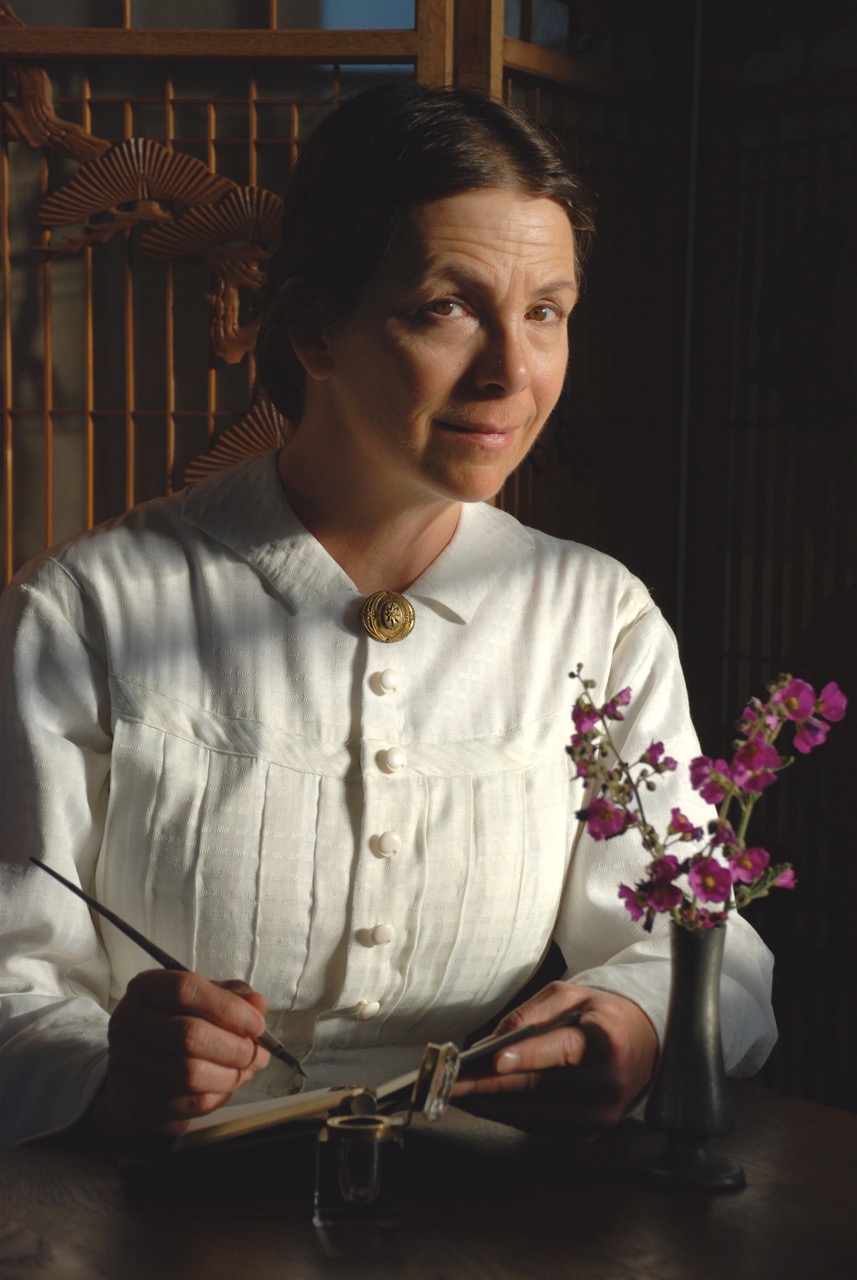
A Quiet, Forceful voice
Melanie Jones as Emily Dickinson in “The Belle of Amherst”
I’m intrigued by people who are intrigued by historical figures, although not in the sense of “I think I was Napoleon or Catherine the Great in a previous lifetime.” What I’m referring to are those figures with whom we feel some kind of inexplicable connection or kinship, a sense of brotherhood or sisterhood that cuts clean through the distance of time and place that separates us. Somehow we know, or believe, that if only it were possible to meet this person in the flesh we would have so much to say and discuss.
I don’t know Melanie Jones well, but we’ve talked on many occasions and she seems to share the same level of sensitivity and openness to the world that I would attribute to Emily Dickinson. She’s been performing “The Belle of Amherst” for a couple of decades now, performs it yet again on Sunday, and her fascination with her subject hasn’t waned. But why should it? Clearly there’s something there, still calling and resonating through the many years that separate the two women.
I asked Melanie Jones for some thoughts on Emily Dickinson, and what draws her to this exquisite and great American poet. Here’s what she wrote:
People in Emily Dickinson’s hometown of Amherst, Massachusetts, thought she was crazy. She kept to herself, always wore white, never married, and in the wee hours of many nights, and in between her household duties, she wrote almost 1,800 poems that have weathered time to be lauded as vanguards of modern poetry. Although she was virtually unknown outside her village during her lifetime, she left a legacy of art that argues an almost clairvoyant understanding of her potential audience and embodies a life lived with fervid dedication.
The one-woman play that I am performing, “The Belle of Amherst,” by William Luce, presents an Emily who is self-aware, spiritually curious, and deeply committed to her own journey, willing to pay the price of aloneness to be as wholly herself as possible. She loves deeply, observes clearly, and embraces life with a concentrated fervor that continues to animate her poems over 130 years after her death.
Emily also has a great, sly sense of humor. Maybe she learned it from the antics of the birds–she had a passion for birds–but certainly she saw herself as part of a society much larger than the community of humans. Although she avoided people, she embraced Nature and strove to express its powerful, encompassing mystery in her poems. She honored her own truth, even in the face of judgment and isolation. Her courage amazes me.
There is no doubt in my mind that Emily was “different,” as polite society might say, and her differentness never ceases to inspire me. She believed in herself, in the value of what captured her imagination and the importance of communicating the wonder of living. She is always reaching for Something Great, looking for the reflection of greatness in her own life and circumstances and finding it often enough, as her poems attest. If that is crazy, sign me up. In the play, Emily asks if there is more to this world than Love and Death–“Tell me its name!” she pleads. I would suggest that there is also Art, when the art is as enduringly magnificent as Emily’s is. She is a beacon of sanity, shining shyly in her white dress, lighting a path with her language.
The Belle of Amherst, by William Luce, and subtitled “The Untold Story of Emily Dickinson,” is a one-woman play featuring Melanie Jones. She performs it at 2 p.m. on Sunday in the Grand Annex, 434 W. Sixth St., San Pedro. The play is followed by a tea party. Tickets, $45. Call (310) 833-4813 or go to grandannex.org. ER

